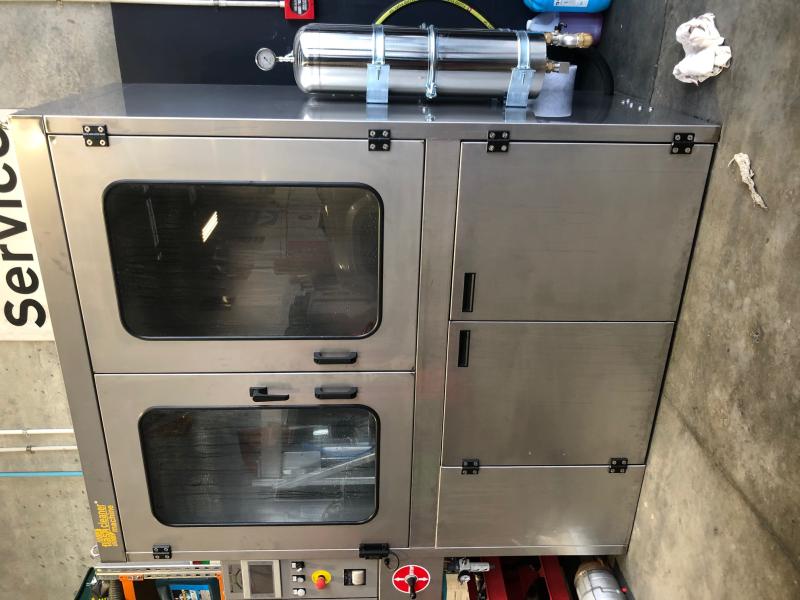The headline above sounds a whole lot more interesting than risk management and driver safety. But what if it was your company vehicle with signage all over it leading the 6pm News?
And what if the next night on the news it was followed up with your worker having a recent history of serious traffic violations, the baby dying of horrific injuries; with background scenes of your company car still embedded in the rubble, the family gathering in tears watching the ambulance driving off with siren wailing and lights flashing.
Not quite the profile or image any organisation wants for their business or people!
Tragedies such as this are difficult to manage at the best of times, but they are set to get worse for company directors and people in positions of responsibility, or workers, when the Health & Safety Reform Bill becomes legislation on April 4.
It’s not only the business owners or officers who have duties under this Act. Workers must:
(a) Take reasonable care for his or her own health and safety; and
(b) Take reasonable care that his or her acts or omissions do not adversely affect the health and safety of other persons; and
(c) Comply, as far as the worker is reasonably able, with any reasonable instruction that is given by the PCBU to allow the PCBU to comply with this Act or regulations; and
(d) Co-operate with any reasonable policy or procedure of the PCBU relating to health or safety at the workplace that has been notified to workers.
A PCBU is defined under the Act as a “Person Conducting a Business or Undertaking" but it includes workers as well…
You might like to consider Section 47. A person commits an offence against this section if the person, without reasonable excuse, engages in conduct that exposes any individual to whom that duty is owed to a risk of death or serious injury or serious illness; and is reckless as to the risk to an individual of death or serious injury or serious illness.
A person who commits an offence against subsection (1) is liable on conviction:
(a) For an individual who is not a PCBU or an officer of a PCBU, to a term of imprisonment not exceeding five years or a fine not exceeding $300,000, or both:
(b) For an individual who is a PCBU or an officer of a PCBU, to a term of imprisonment not exceeding five years or a fine not exceeding $600,000, or both:
(c) For any other person, to a fine not exceeding $3-million.
Some workshops will have already reviewed the provisions of the Act (http://www.legislation.govt.nz/act/public/2015/0070/latest/DLM5976660.html) and will have spent many hours working with specialist advisors and staff to develop Health and Safety programmes for their place of business – which also extends to vehicles owned or driven by staff and customers.
Acts and omissions
This legislation applies to both the things you do (acts) and the things you don’t do (omissions). Say, for example ,you had an accident when driving a customer home and they were seriously injured – this is now a “notifiable event”. If it turned out you had “forgotten” to tell your boss you got caught doing an excessive speed and due to demerits, lost your driver’s licence; then it’s highly likely the next few years are going to be dedicated to paying a very hefty fine.
If your boss (the PCBU) hadn’t quite got around to preparing a Health & Safety programme, or briefing staff on safe driving, it’s quite possible he or she would also be contributing the next few year’s business income to the government coffers. And if the customer died of the injuries, then perhaps a jail term for both of you.
In practical terms
By now, if you are a forward thinker running a business in the automotive industry or it involves fleet or courtesy vehicles, the whole idea of risk management and driver safety should be looking more like a silver lining. The practical daily application of any decent H&S fleet programme should include a GPS solution to provide increased productivity, reduced fuel and servicing costs, and potentially cheaper motor insurance.
The writer of this article has been personally involved in the managing of many thousands of domestic and fleet motor accident claims, and can attest to the power and influence of tracking devices in vehicles.
Especially when:
- Devices are programmed to send a text notifications for incidents of excessive speeding, high and medium g-force events, and harsh braking.
- A real person follows up on the majority of incident and event notifications by calling the driver within minutes of the event occurring.
- A daily report summarising activities and driver performance is emailed automatically by the GPS system, and specific warnings or re-training is provided to correct errant behaviour.
There are various types of GPS devices available, and even ones which can be moved between vehicles by plugging them into the OBD port. This is a serious solution for managing the misuse of courtesy vehicles due to speeding, breakdowns or limitations of usage where geo-fences can be placed around zones.
A vital aspect of these devices is they record information that can be utilised to determine circumstances of accidents and the driving characteristics prior to the event. Entire journeys are able to be replayed to assist in determining just who was at fault. Additionally, your broker and insurers can be provided with accurate data to support recovery or defensive positions should there be third parties involved, or accusations of vehicular negligence.
The potential for damage to company reputation where a camera is in practically every mobile phone is enormous. With a few clicks your company vehicle can suddenly be doing the virtual rounds of the globe through social media while your idiot customer, or worker. is still somewhere out there causing mayhem!
Smartphone solution
We are aware of the development of a smartphone app for the auto industry that carries all your Health & Safety policies, staff training, leave, hours worked and a whole bunch of other useful features. It will be ideal to ensure your obligations as a PCBU or worker are covered and available to support a defence in court.
Watch this space for details or register your interest: peter179@me.com
In summary
The countdown has already started. 2016 is the year of Health and Safety in the workplace,
and April 4 is the date when everything should be in place. Ignore this at your peril as ignorance or indifference will be treated harshly. You can’t contract out of your obligations, or buy insurance cover to pay any penalties.
On a positive note you can earn a 10 percent discount on ACC levies (http://www.acc.co.nz/for-business/tax-agents-accountants-andadvisors/cover-products/BUS00073), and a well-crafted programme will ensure you retain your contract with certain insurers that send you business.
Telematics on a global basis is now a well-established trend that positively influences driver behaviour. The power of the GPS tracking data it generates is still yet to reach its potential to save lives, save on fines, preserve a company’s image and reputation. It can also be expected to limit the possibility of company directors or officers spending time defending the company – or staying out of jail.





